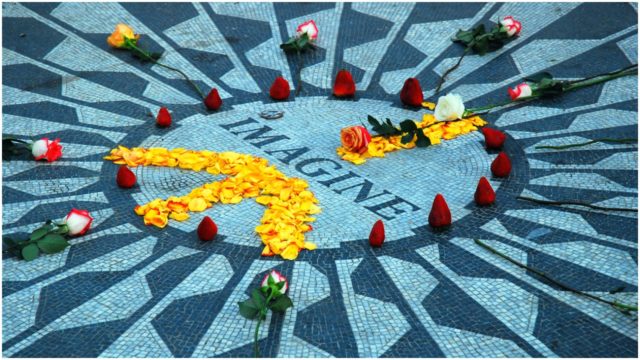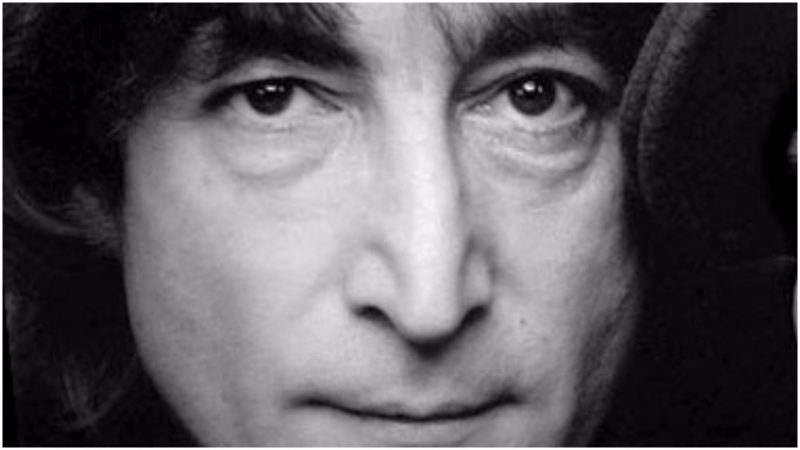Mark David Chapman spent the day of December 8, 1980, stalking John Lennon, the famous singer-songwriter and bespectacled intellectual of arguably the world’s first mega-pop group, the Beatles. Then 25, Chapman seemed pulled between opposing impulses: He was a born-again Christian raised in Texas and Georgia who abused drugs.
He was a caring camp counselor who suffered from suicidal impulses. He read J. D. Salinger’s classic treatise of teenage ennui, The Catcher in the Rye, with religious zeal, fashioning himself as self-righteously judgmental as the anti-hero Holden Caulfield, out to eradicate the world of “phonys.” He seemed to both revere John Lennon while at the same time resenting his fame.
On the morning of the day that would seal their fates, Chapman left the hotel where he’d been staying for the Dakota Apartments, the luxuriously ornate building on Central Park West and 72nd Street, in New York City, where John Lennon lived with his wife, Yoko Ono, and their young son, Sean. Chapman lurked outside the entrance, talking to a doorman and a housekeeper, and even reaching out to touch Sean, then just 5, calling him a “beautiful boy,” creepily quoting a song from Lennon and Ono’s new album, Double Fantasy.
Chapman may not have noticed the arrival of celebrity photographer Annie Leibovitz, who came to photograph the famous couple for a cover of Rolling Stone to mark the release of Double Fantasy, Lennon’s first full-length album since the birth of Sean. Lennon and Ono lived in two apartments they’d purchased on the seventh floor of the Dakota; they also owned three other apartments—one for storage, one for a studio, and one for guests.

Jann Wenner, the editor in chief of Rolling Stone, had wanted a photograph of just Lennon, but he’d insisted that Ono be in the photo. “If they don’t want the two of us, we’re not interested,” Lennon said, according to the new biography Sticky Fingers: The Life and Times of Jann Wenner and Rolling Stone Magazine, by Joe Hagan. Lennon provocatively took his clothes off and wrapped himself around a clothed Yoko Ono. “This is it,” Lennon told Annie Leibovitz. “This is our relationship.”
After Leibovitz wrapped the photo session, Lennon and Ono left the Dakota. They were on their way to the Record Plant studios to listen to their recording of Ono’s disco single Walking on Thin Ice. But before they could get into their limo, a chubby fan thrust a copy of Double Fantasy toward Lennon, requesting an autograph. Looking slightly annoyed, the rock star scrawled his signature across Yoko Ono’s exposed neck on the album cover. That moment—Lennon signing while the chubby Mark Chapman looked on—was eerily captured by an amateur photographer and later splashed across the front pages of local tabloids.
When Lennon and Ono returned to the Dakota at 10:50 on Monday, December 8, 1980, Chapman was waiting for them. He pointed a .38 at Lennon’s back and shot him five times. Rushed to Roosevelt Hospital, Lennon was pronounced dead on arrival.
After the shooting, the Lennon-autographed Double Fantasy album was found in a flower planter outside the Dakota, according to the webseller Moments in Time. It has changed hands twice, for $150,000 in 1999 and $850,000 in 2010. In July of 2017, it was offered up for sale for $1.5 million.
With Yoko Ono’s permission, Annie Leibovitz’s photo of the naked Lennon embracing Ono became the cover of the January 22, 1981, issue of Rolling Stone. No type obscured the image. The entire issue was devoted to Lennon, according to Hagan’s biography. In it, Ono wrote that she showed the photo to Sean when telling him of his father’s death. “Sean wanted to know why the person shot John if he liked John. I explained that he was probably a confused person.”

Chapman, now 61, is an inmate at the maximum-security Wende Correctional Facility, in Alden, New York. Since 2000, he has been eligible for parole review every two years. In 2016, his parole plea was rejected for the ninth time. “The Board of Parole commends your acceptance of responsibility and vivid characterization of your crime as premeditated, selfish and evil,” the parole panel wrote, as reported by the U.K.’s Daily Mail. “We find all to be outweighed by the premeditated and celebrity seeking nature of the crime. From our interview and review of your records, we find that your release would be incompatible with the welfare of society and would so deprecate that seriousness of the crime as to undermine respect for the law.” Yoko Ono is on record as being fiercely opposed to Chapman’s release, citing both the threat to Lennon’s two sons, Julian and Sean, as well as the threat to Chapman himself from retributive fans. His next review will be in 2018.
“I made a horrible decision to end another human being’s life, for reasons of selfishness, and that was my decision at that time,” Mark David Chapman noted on his application for parole in 2010. “I felt that by killing John Lennon I would become somebody, and instead of that I became a murderer and murderers are not somebodies.”
Were he still alive today, John Winston Ono Lennon would be 77.
